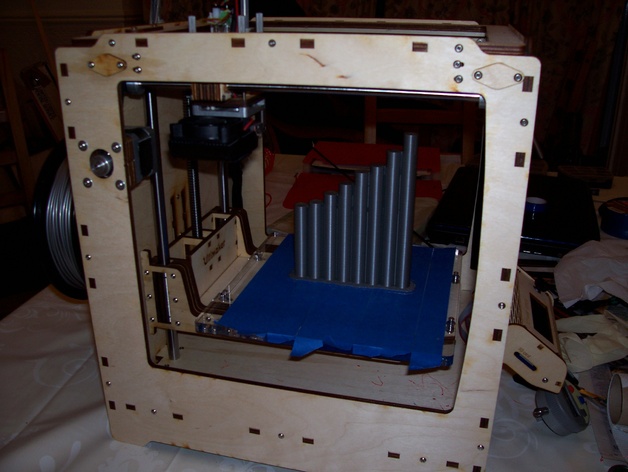
Parametric Pan Pipes - any scale you like.
thingiverse
Pan Pipes - any scale, any temperament - takes a list of frequencies and converts it to a set of Pan Pipes. Instructions This thing prints out a set of Pan Pipes from a list of frequencies in Hz. This allows you to print out Pan Pipes with different tunings and completely arbitrary scales. I give the normal equal tempered C scale as an example. The tinkering bit When you design a set of pipes, make sure your machine can accommodate them! They can get quite long at the lower frequencies. If absolute pitch is important to you, it is a good idea to print out a single pipe (say c5) and use a tuner to make sure your machine is calibrated OK. Each pipe should give a clear, strong tone. If a pipe doesn't sound, or only sounds with difficulty, it probably has a leak. I had problems with my first prototype with the ends of the pipes being porous. I have now made them thicker and this should not be a problem. Make sure you print with extra top layers. You can also fill the pipes with acrylic varnish then empty it out to fill in any porosity. I print with 0.8mm wall thickness and 20% fill density. This seems to be a good compromise between density and use of plastic. The parameters in the SCAD program are: 1) radius - the radius of the pipe. About 6mm works well. 2) wall - the thickness of the wall of the pipe. You should use at least 2mm to give the pipes some mechanical strength and allow them to resonate. 3) notes - an array of frequencies in Hz. The science bit The Pan Pipe is probably the simplest wind instrument. It is a pipe that is open at one end and closed at the other. The sound is made by blowing across the open end. You can calculate the length of pipe for a given frequency of note quite easily: 1) The open end of the pipe must be an anti-node in the sound wave (maximum amplitude). 2) The closed end of the pipe must be a node in the sound wave (no amplitude). Looking at a sine wave, the distance from any antinode to the next node is 1/4 of the wavelength of the note. For waves: wavelength = velocity / frequency pipe_length = (1/4) x ( velocity / frequency ) Given the speed of sound in dry air at 20C and 1 atmosphere is 323.2 m/s, we can calculate the pipe_length for any frequency.
With this file you will be able to print Parametric Pan Pipes - any scale you like. with your 3D printer. Click on the button and save the file on your computer to work, edit or customize your design. You can also find more 3D designs for printers on Parametric Pan Pipes - any scale you like..
